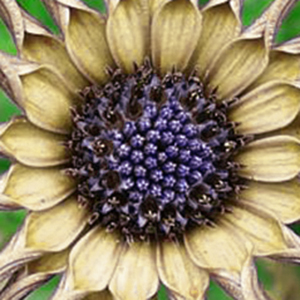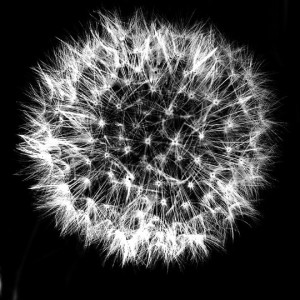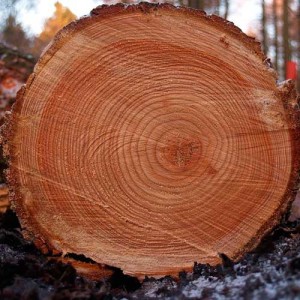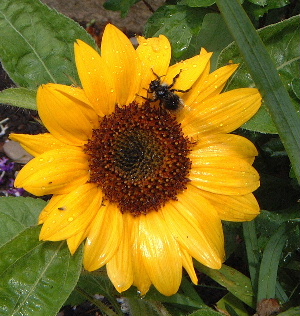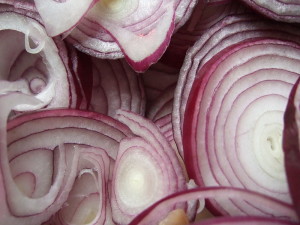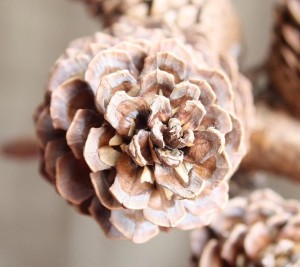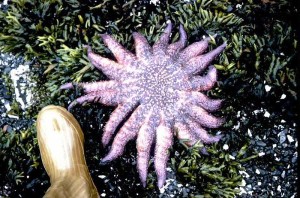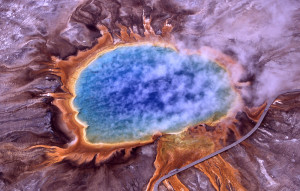Mandala Monday – Finding Mandalas in Nature By Chris Lindsay
The next time you’re wandering around your garden, checking out your window boxes or taking your dog for a walk in the park, look around you – mandalas are everywhere. You just have to look around you to see the basic shape of a central point surrounded by an organized pattern radiating outwards. Sometimes just turning a flower or a pinecone around will reveal its mandala nature. You can draw inspiration from these natural designs, their shapes and their colours, in creating your own mandalas.
Mandala designs are easy to see in flowers. Petals surrounding a central core form the most natural designs. Imagine a sunflower, with its face full of sunflower seeds, surrounded by large, bright yellow petals. It’s a mandala guaranteed to make you smile. And something equally as cheerful – a daisy. Or perhaps a rose or a begonia for a mandala with overlapping petals.
How about vegetables as geometric designs? Cut a tomato in half crosswise, and you’ll find a centre piece of the stem, with segments around it, each containing the seeds and juice. A cross-section of a bell pepper shows the veins and seeds, and the underside of a mushroom reveals the stem and the many lines of gills. Artichokes form one of my favorite designs. All of these are mandalas in nature.
And don’t forget about fruit as creative inspiration. You can see obvious mandalas when you cut citrus fruit in half. The segments of fruit surround a central stem and the seeds form additional decoration. Looking at a strawberry from the top down reveals a radiating pattern of seeds on a luscious bright red background.
Trees also contribute to the vast array of mandalas in nature. A cross-section of the trunk reveals the tree rings. But pinecones also have a beautiful symmetry when held upright.
It’s not difficult to find mandalas in the flora world, but what about animals? Are some constructed in a mandala structure?
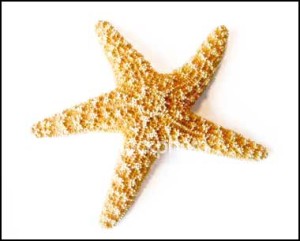
Starfish spring to mind. The 5 pointed arms around the body of the starfish form a simple pattern. And octopi and jellyfish can also seem to form similar patterns when viewed from above as they swim along. And sea anemones, and so on.
Mandalas are everywhere in nature, which may explain why they have been used as powerful and spiritual designs by humankind throughout thousands of years.
Searching for, and studying, mandalas in nature in your everyday life will have several amazing benefits:
* you’ll come to recognise the universality of the mandala
* you may be influenced in your colour choices in colouring mandalas by the ones you find in nature
* you may be inspired to create mandalas of your own based on those you see around you
* it’s exciting to find a new way to connect with nature
* you’ll appreciate even the smallest piece of the natural world when you’re looking for mandalas there.
By recognising and connecting to the mandalas in the natural world around you, you may begin to understand how many cultures consider the designs to represent universal truths.
Chris Lindsay is giving free rein to her creativity by designing mandalas for herself and others to color in. She uses geometric patterns from temari, yantra and kaleidoscope designs as the starting points for her creations. Whether you want to reduce stress, to quieten your mind, meditate or just to have fun, coloring is a great activity for all ages and all abilities.
Visit http://www.mandalas-to-color.com and set your artistic creativity free.
Upload your photos of the mandalas you have found in nature at http://www.mandalas-to-color.com/your-nature-mandalas.html
Article Source: http://EzineArticles.com/?expert=Chris_Lindsay

